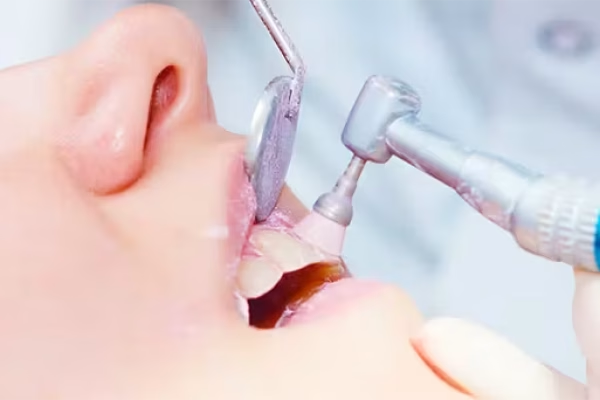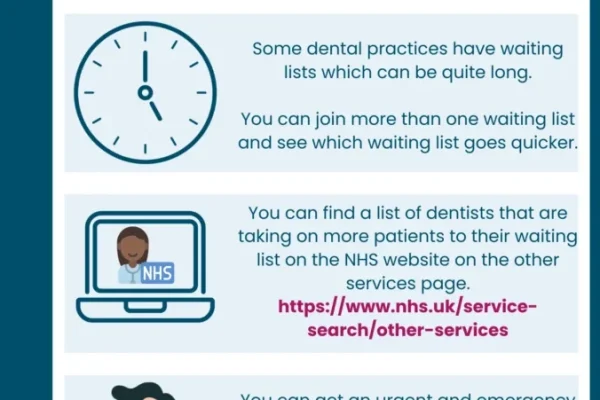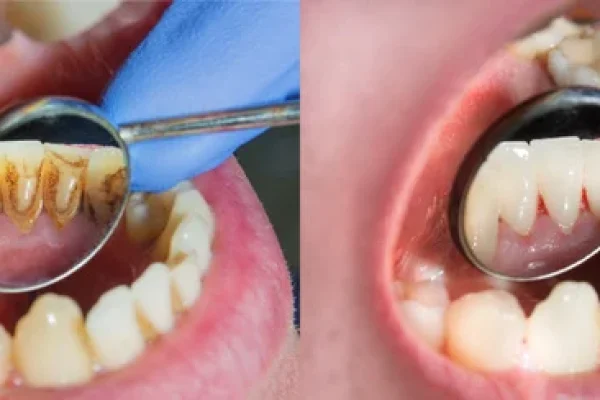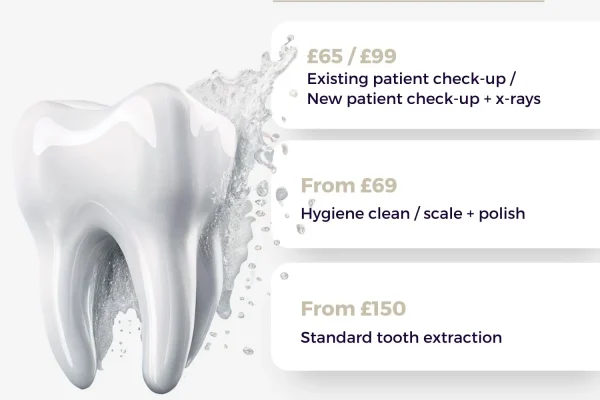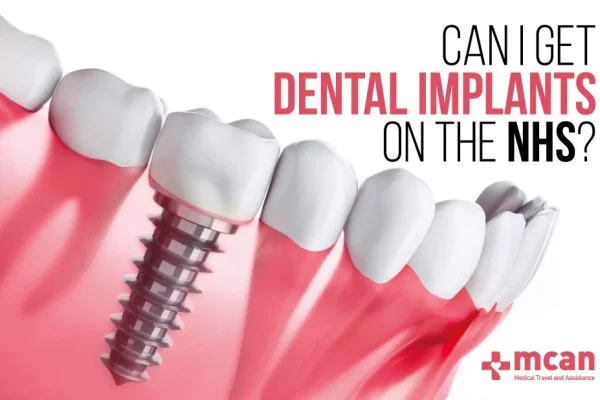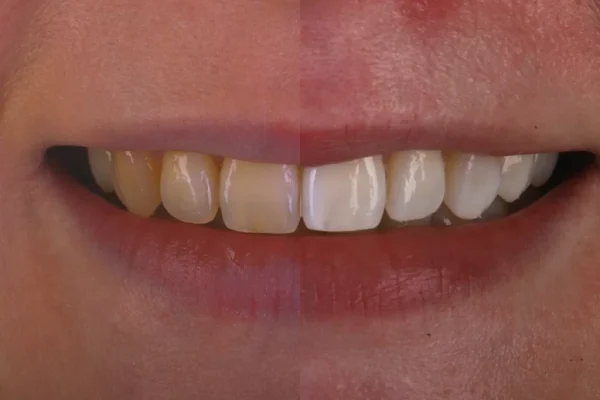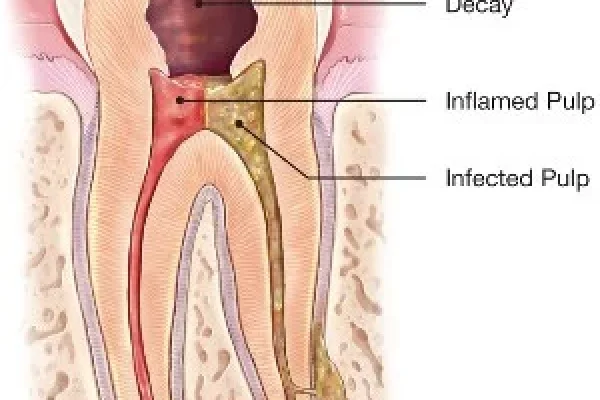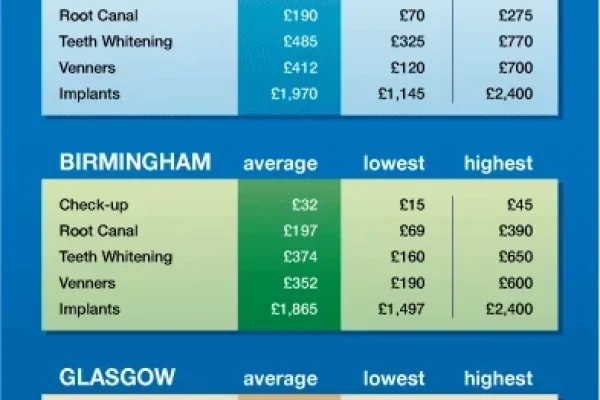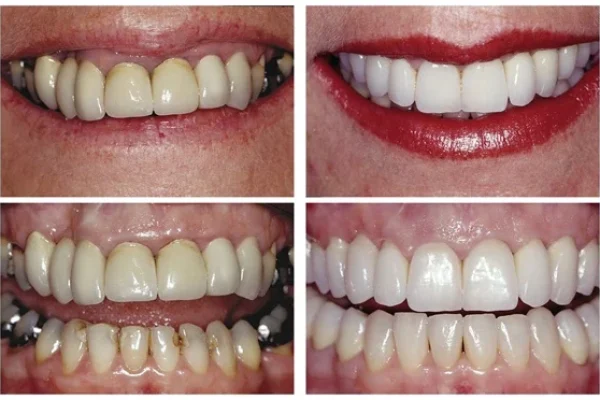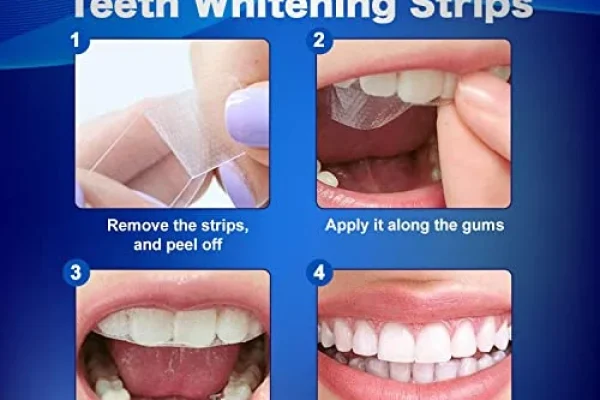
Table of Contents
ToggleKey Takeaways
-
- Dental Hygienists are licensed oral healthcare professionals focused on prevention and treatment of oral diseases.
-
- They are *distinct* from dentists, with different training and scopes of practice, but work collaboratively.
-
- Their core functions include oral health assessment, meticulous cleaning (scaling and polishing), and crucial patient education.
-
- Regular hygiene appointments are *vital* for preventing serious issues like gum disease and detecting problems early.
-
- Hygienists *cannot* perform procedures like fillings, extractions, or root canals, which are solely within a dentist’s scope.
-
- Becoming a hygienist requires accredited education (typically Associate’s or Bachelor’s) and licensing.
-
- Seeing a dental hygienist is an important *investment* in your long-term oral and overall health.
- The profession is rewarding but can involve physical and mental challenges.
What is a Dentist Hygienist and What’s Their Role in Your Oral Health?
Forget the outdated image of a quick scrub; the dental hygienist is a highly skilled, licensed oral healthcare professional whose primary focus is the prevention and treatment of oral diseases, working under the general supervision of a dentist (though regulations vary). You might hear them called an ‘oral hygienist’ or simply a ‘hygienist’, but the title carries significant weight. At their core, they are the champions of ‘dental hygiene’ – the intricate practice of keeping your mouth clean, healthy, and free from the insidious creep of plaque and calculus (hardened plaque, basically cement for bacteria). This isn’t merely aesthetic; it’s foundational to your overall health. Poor oral hygiene is linked to a rogues’ gallery of systemic issues, from heart disease to diabetes complications. The hygienist stands between you and that potential chaos. Within the bustling ecosystem of a dental practice, they occupy a unique and crucial position, acting as the preventative arm, the educators, and the meticulous cleaners. While working hand-in-hand with the dentist, collaborating on patient care plans and alerting them to potential issues, they operate autonomously within their defined scope of practice. They are unequivocally *distinct* from dentists, possessing a different educational background and set of permitted procedures, but their contributions are no less critical. The ‘Role of a Dental Hygienist’ is multifaceted: clinician, educator, assessor, and therapist, all rolled into one dedicated package, focusing relentlessly on keeping your mouth not just looking good, but functioning perfectly and staying disease-free long-term. They are your guide, your coach, your preventative partner in the lifelong journey of maintaining oral wellness.
Are Dental Hygienists the Same as Dentists?
Absolutely not. Let’s put this to bed right now: a ‘hygienist is a dentist’ is a common misconception, but incorrect. While they are both highly trained professionals operating within the dental field and working collaboratively in a practice, they are definitively separate roles with distinctly different scopes of practice, educational pathways, and licensing requirements. Think of it like a surgeon and a physiotherapist – both crucial to recovery, working together, but with vastly different training and daily functions. The dentist is primarily focused on diagnosing complex conditions, performing surgical procedures, administering anaesthesia for complex treatments, and carrying out restorative work like fillings, crowns, bridges, and root canals. The hygienist, on the other hand, is laser-focused on prevention, education, and non-surgical periodontal therapy (gum treatment), primarily dealing with the surfaces of the teeth and gums to remove deposits and educate patients on home care.
What is the Full Meaning of Hygienist in the Dental Field?
The word “hygienist” itself is rooted in “hygiene,” which comes from the Greek word “hygieia,” meaning health. In the dental context, a hygienist is someone dedicated to the *science of health* within the oral cavity. Their title perfectly encapsulates their core function: maintaining and promoting the *hygiene*, or cleanliness and health, of the mouth. This goes beyond simply cleaning; it’s about understanding the biology of plaque formation, the progression of gum disease, the impact of diet and habits, and possessing the sophisticated skills and knowledge to prevent and treat these issues at their root cause – often, poor hygiene and bacterial build-up. Their focus is fundamentally on preventative care and therapeutic strategies aimed at preserving the supporting structures of the teeth and preventing the need for more invasive dental treatments down the line.
What Does a Dental Hygienist Do During Your Appointment?
Alright, so you’re in the chair, bib on, light in your eyes. What magic is about to unfold? A dental hygienist appointment is far more comprehensive than just a quick scrape and polish. It’s a thorough examination, a deep clean, and a personalised education session all rolled into one, meticulously executed to keep your mouth in tip-top condition. The ‘main functions and responsibilities’ are vast and varied, but centre around assessment, cleaning, and teaching. They begin with an ‘Oral Health Assessment’ dental check up, carefully examining your teeth, gums, and the surrounding tissues, often probing your gum pockets (don’t worry, it sounds worse than it is!) to check for signs of gum disease. They might take x-rays or other diagnostic images. Then comes the main event: the cleaningprofessional dental cleaning. This involves expertly removing plaque, stains, and the stubborn, mineralised deposits known as calculus from the surfaces of your teeth, both above and below the gumline. They use a variety of specialised instruments – ultrasonic scalers that vibrate deposits away, and hand instruments that allow for precise removal in tricky spots. This process, often called ‘scaling’ or ‘debridement’, is crucial because calculus cannot be removed by brushing or flossing alone and harbours bacteria that cause gum disease. After the scaling, they typically ‘polish’ your teeth, leaving them smooth and gleaming, less likely to attract new plaque. They might also apply fluoride treatments or sealants to offer extra protection. But their role extends far beyond the physical cleaning. A huge part of ‘what a dental hygienist does’ is ‘Patient Education’. They are your primary source of information on effective brushing and flossing techniques, explaining *how* to clean properly at home, *why* certain areas are problematic, and advising on diet, oral hygiene products, and habits like smoking or teeth grinding. They also play a critical role in ‘Collaboration with Dentists’, alerting the dentist to any suspicious lesions, cavities, or significant changes in your oral health that require a dentist’s diagnosis or treatment. ‘Why doesn’t the dentist do this work?’, you might ask? Because these preventative and maintenance procedures are time-consuming and require a specific, nuanced skillset focused on soft tissue health and non-surgical cleaning, allowing the dentist to concentrate their extensive training on diagnosis, complex treatment planning, and restorative or surgical procedures. It’s an efficient and effective division of labour, maximising the expertise of both professionals for your benefit.
What Procedures Can a Dental Hygienist Perform?
The scope of practice for a dental hygienist is specific and varies slightly by region, but commonly includes: thorough cleaning (scaling and root planing – deep cleaning below the gumline), removing plaque, calculus, and stains; performing oral health assessments, including charting existing conditions and probing gum depths; taking and developing dental x-rays; applying preventative agents like fluoride varnishes and sealants; providing tailored oral hygiene instructions; polishing teeth; administering local anaesthetic in some jurisdictions; and screening for oral cancer and other abnormalities. They are the undisputed masters of the preventative and non-surgical therapeutic aspects of dental care.
What Does the Dental Hygienist’s Job Description Entail?
A typical ‘dental hygienist’s job description’ is a robust list of responsibilities. Beyond the clinical duties of scaling, polishing, and applying preventative treatments, it involves meticulous patient assessment and documentation – including taking medical history, vital signs (like blood pressure), and performing head and neck exams. They chart the condition of teeth and gums, create detailed treatment plans focused on hygiene needs, and communicate findings to the dentist. Patient education is paramount, requiring excellent communication skills to motivate and instruct individuals on improving their home care. They also sterilise instruments, maintain equipment, and often manage appointment scheduling. It’s a blend of highly technical clinical work, scientific knowledge, and interpersonal skills.
What is the Difference Between a Dentist and a Dental Hygienist?
Let’s starkly illuminate the path divergence. While both dentists and dental hygienists undergo rigorous, science-based training and are integral members of the dental team, their ‘educational paths and qualifications’ differ significantly, leading to distinct ‘scopes of practice and authorized procedures’. Think of the dentist as the general practitioner and surgeon of the mouth, tackling the diagnosis of all oral diseases, complex treatment planning, prescribing medications, performing surgical procedures (like extractions and implants), administering anaesthesia for invasive work, and carrying out restorative dentistry (fillings, crowns, bridges, dentures) and cosmetic procedures. Their education typically involves a four-year undergraduate degree followed by a four-year dental degree (DDS or DMD), plus potential specialisation training. A dental hygienist, on the other hand, typically earns an associate’s or bachelor’s degree in dental hygiene, focusing specifically on preventative care, non-surgical periodontal therapy, patient education, and oral health assessment. Their training delves deeply into the biology of periodontal disease, advanced cleaning techniques, and public health aspects of oral hygiene. This means while a hygienist is the expert in scaling and root planing to manage gum disease, they are not trained or licensed to diagnose conditions requiring dental intervention (though they identify potential issues), perform fillings, extract teeth, or carry out root canals. The comparison boils down to ‘Dentist vs. Dental Hygienist’: one diagnoses and treats the *disease and damage* with a broad range of medical and surgical interventions; the other prevents the *disease* and maintains the *health* of the supporting structures through meticulous cleaning and education. They are complementary forces, each essential for comprehensive oral care.
Can a Dental Hygienist Become a Dentist?
Yes, but it’s not a simple step up; it requires embarking on a separate, comprehensive educational journey. A dental hygienist interested in becoming a dentist would typically need to complete prerequisite courses they might not have taken during their hygiene training, apply to dental school, and successfully complete the four-year DDS or DMD program. While their background in oral health and clinical experience provides a fantastic foundation and likely an advantage in the application process, it does not exempt them from the full dental curriculum. Their hygiene degree doesn’t substitute for a dental degree, highlighting the significant differences in the depth and breadth of training required for each role.
How Do Dental Hygienists Compare to Other Dental Roles?
The dental team involves various skilled professionals. A ‘dental assistant’, for instance, works chairside with the dentist, handing instruments, preparing materials, and performing basic tasks like taking X-rays or impressions, requiring less formal education than a hygienist. A ‘dental therapist’ (a role more common outside the US, though emerging in some states) often has a scope of practice that overlaps with both hygienists and dentists, sometimes allowed to perform basic restorative procedures like simple fillings, but still distinct from a full dentist. The dental hygienist stands apart with their focused, in-depth education and clinical expertise specifically in preventative and non-surgical periodontal care, making them the dedicated specialist for maintaining the health of your gums and the supporting structures of your teeth.
What Qualifications and Training Are Needed to Become a Dental Hygienist?
Stepping into the role of a dental hygienist requires a commitment to rigorous education and continuous professional development. It’s not a weekend course; it’s a serious academic and clinical undertaking. The typical ‘Educational Path of a Dental Hygienist’ in many parts of the world involves completing an accredited dental hygiene program. While an associate’s degree is often the minimum entry point, many aspiring hygienists pursue a bachelor’s degree, which can open doors to broader career opportunities in education, public health, or research. The curriculum is dense and science-heavy, encompassing subjects like anatomy, physiology, pharmacology, pathology, microbiology, radiology, periodontology (the study of gum diseases), and clinical dental hygiene practice. Students spend countless hours in supervised clinical settings, honing their manual dexterity and patient care skills on mannequins and then live patients. After completing the program, graduates must pass national and/or regional board examinations to become licensed, demonstrating competency in scientific knowledge and clinical skills. Licensing is ongoing, typically requiring continuing education credits to stay updated on the latest research, techniques, and technologies. So, when you ask ‘What degree do most dental hygienists have?’, while associates are common, the trend is leaning towards bachelor’s degrees, reflecting the increasing complexity and importance of the role. This extensive training ensures they are highly qualified professionals capable of providing advanced preventative and therapeutic care.
What is the Fastest Way to Become a Dental Hygienist?
Generally, the ‘fastest’ route to becoming a licensed dental hygienist involves completing an accredited associate’s degree program, which typically takes two years of full-time study after completing any necessary college prerequisites. There’s no real shortcut that compromises the essential clinical and scientific training required for patient safety and competency. While some programs might structure semesters differently or offer intensive schedules, the core curriculum and required clinical hours mean that completing the training in significantly less than two years is usually not possible for an accredited program. ‘What is the shortest dental hygienist program?’ would typically be a two-year associate’s degree, assuming you meet all admission requirements and prerequisites beforehand.
Why Should You See a Dental Hygienist Regularly?
Let’s cut to the chase: regular appointments with a dental hygienist are not a luxury; they are a fundamental pillar of long-term oral health and, by extension, overall well-being. Understanding the ‘Importance of Dental Hygienists’ is key to appreciating why that six-monthly (or more frequent, if recommended) visit is non-negotiable. These appointments are your primary defence against the silent, creeping threats of gum disease (periodontitis) and tooth decay, which can otherwise lead to pain, tooth loss, and expensive restorative procedures down the line. The ‘benefits of a dental hygiene appointment’ are manifold and profound. Firstly, they provide ‘Enhanced Preventive Care’ that you simply cannot replicate at home. Their specialised tools and expertise allow them to remove hardened calculus (tartar) and plaque from areas your toothbrush and floss just can’t reach, preventing bacteria from causing inflammation and infection. Secondly, they are experts in ‘Early Detection of Oral Health Issues’ dental check up. During your visit, they meticulously examine your mouth for the nascent signs of cavities, gum disease, oral cancer, and other abnormalities, often spotting problems before they become visible or cause symptoms, allowing for earlier, less invasive, and more successful treatment by the dentist. Thirdly, they provide ‘Personalized Patient Care’ through tailored education, identifying specific areas where your home care might be lacking and demonstrating effective techniques using your unique oral anatomy as a guide. They help you develop habits that contribute to a ‘healthy, happy smile’ for life. It’s an investment in your future health, preventing pain, preserving your natural teeth, and saving you money on potentially extensive treatments later. Seeing a hygienist is proactive health management, ensuring minor issues are caught and dealt with before they snowball into major problems.
Are Dental Hygienists Worth the Investment?
Unequivocally, yes. Viewing the fee for a hygienist appointment as merely the ‘cost of a dental hygienist’ misses the larger picture entirely. It’s an investment in preventative care, and the return on that investment is substantial. Think about the potential costs associated with advanced gum disease (like bone grafts, gum surgery, or tooth extraction) or extensive decay requiring root canals, crowns, or implants. These treatments are not only costly in financial terms but also in terms of time, discomfort, and the potential loss of natural teeth. Regular hygiene appointments help prevent these severe issues by keeping the foundation (your gums and bone) healthy and catching early signs of decay. In essence, paying for regular hygiene visits helps you avoid the significantly higher ‘costs’ (financial and physical) of treating problems that could have been prevented. They are absolutely worth the investment for long-term oral health and financial prudence.
What Procedures Can a Dental Hygienist NOT Perform?
It’s crucial for patient safety and clarity of roles within the dental team to understand the definitive boundaries of a dental hygienist’s scope of practice. While their skills are extensive in prevention and non-surgical therapy, there are certain procedures that fall exclusively under the purview of a licensed dentist, requiring their more comprehensive medical and surgical training. Clearly defining ‘What a hygienist cannot do’ is not about diminishing their role, but about respecting the specialisation and legal limitations designed to protect the public. A dental hygienist is *not* permitted to diagnose systemic diseases or oral pathology (though they can identify potential issues for the dentist), nor can they perform irreversible procedures that alter the tooth structure or require surgical intervention.
Can a Hygienist Do Fillings or Remove Teeth?
Absolutely not. To directly answer, ‘Can a hygienist do fillings?’ and ‘Do dental hygienists remove teeth?’ – the answer is a firm no. Placing fillings to restore decayed teeth requires the extensive training in restorative dentistry that dentists receive. Similarly, tooth extractions, whether simple or surgical, are invasive procedures requiring surgical training, understanding of bone and tissue manipulation, and managing potential complications, all of which are part of a dentist’s education and scope, not a hygienist’s. These procedures fall outside the preventative and non-surgical therapeutic focus of a dental hygienist.
Can a Dental Hygienist Perform Teeth Whitening?
This is a procedure where the regulations vary more significantly depending on location. In many places, ‘Can a dental hygienist perform teeth whitening?‘ depends on the specific type of whitening and the local laws. Some jurisdictions allow hygienists to apply in-office whitening treatments under a dentist’s supervision, while others restrict it solely to dentists. However, dental hygienists are almost universally permitted to take impressions for custom whitening trays, provide patients with take-home whitening kits prescribed by the dentist, and offer guidance on safe and effective whitening practices. So, while ‘Does the hygienist whiten teeth?’ isn’t a universal yes, they are often involved in the whitening process, particularly in the provision of take-home options and patient counselling.
What to Expect During a Dental Hygienist Appointment?
Alright, settle in. Knowing ‘What to expect at your appointment’ can definitely ease any jitters. The ‘Detailed Dental Hygienist Appointment Process’ is systematic and designed for thoroughness. It typically begins with the hygienist reviewing your medical history and any changes since your last visit. They’ll likely take your blood pressure as a routine health check. Then comes the oral assessment – a visual inspection of your mouth, throat, and neck to screen for anything unusual, followed by a detailed examination of your gums, measuring pocket depths around each tooth to check for signs of periodontal disease. They will then meticulously scale your teeth, using hand instruments or an ultrasonic scaler (that buzzy tool that uses vibrations and water) to remove plaque and hardened calculus from all surfaces, both above and below the gumline. This is often the longest part of the visit. After scaling, they polish your teeth using a prophy paste (a special gritty toothpaste) and a rotating cup, leaving them smooth and shiny. You might have fluoride applied, especially if you’re prone to cavities. Crucially, a significant portion of the appointment is dedicated to discussion. The hygienist will talk to you about their findings, highlight any areas needing more attention at home, demonstrate effective brushing and flossing techniques tailored to your needs, and answer any questions you have about oral hygiene products or habits. They’ll also relay their findings to the dentist, who might pop in for a brief exam or consult if necessary. The question ‘How long does a hygienist take at the dentist?’ usually ranges from 45 minutes to an hour, depending on the complexity of your needs and the clinic’s scheduling. It’s a focused, preventative session aimed at equipping you with the knowledge and leaving you with a freshly cleaned, healthy foundation for your smile.
Can I See a Hygienist Without Seeing the Dentist?
In many places, yes, thanks to the concept of ‘Direct access to care with a dental hygienist’. This allows registered dental hygienists to provide certain preventative services directly to patients without the patient first needing to see a dentist for an exam. This is particularly useful for routine cleanings for healthy patients or for those who need more frequent hygiene maintenance. However, it’s vital to understand that direct access does not mean the hygienist replaces the dentist entirely. If the hygienist identifies any potential cavities, gum disease requiring surgical intervention, or other pathological issues during your visit, they are obligated to refer you to a dentist for diagnosis and treatment. Direct access is about improving access to preventative care, not bypassing necessary diagnostic and restorative dental services.
How Often Should You Book a Dental Hygienist Appointment?
The standard recommendation for most people is to book a dental hygienist appointment every six months. This frequency is generally sufficient for identifying and removing plaque and calculus buildup before it causes significant problems and allows for early detection of other oral health issues. However, this is just a baseline. Your individual needs might necessitate more frequent visits. Factors like a history of periodontal disease, smoking, diabetes, certain medications, or poor home care can increase your risk and might warrant appointments every three or four months. Your hygienist and dentist will assess your specific risk factors and recommend the optimal recall schedule tailored just for you. Consistency is key, whatever the recommended interval.
What is a Dental Hygienist Salary and Why Do Appointments Seem Expensive?
Discussing finances can feel a bit awkward, but understanding the ‘Dental hygienists salary’ and the factors influencing the ‘cost of a dental hygienist appointment’ helps frame the value proposition. Dental hygienist salaries vary significantly based on location (cost of living affects wages), experience level, type of practice (private clinic, public health, specialty office), and level of education (those with bachelor’s degrees or advanced certifications may earn more). In many developed countries, it is a well-compensated profession, reflecting the specialised skills, scientific knowledge, and demanding nature of the work. Questions like ‘What does a hygienist earn?’ or ‘What is the highest paid dental hygienist?’ show interest in the economic reality, and indeed, experienced hygienists in certain areas can command competitive wages. So, ‘Why are hygienists so expensive?’ or why does the ‘cost of a dental hygienist’ appointment sometimes feel high? It’s not simply about the individual’s salary, although that’s a component. The fee covers the hygienist’s extensive education and training, the significant investment in sophisticated equipment (ultrasonic scalers, sterilisation units, x-ray machines, specialised hand instruments – none of which are cheap), the overhead of the dental clinic (rent, utilities, support staff salaries), the cost of materials used (gloves, masks, prophy paste, fluoride), and the time dedicated solely to your care and education. You are paying for expert skill, advanced technology, a safe and sterile environment, and crucial preventative service that protects your long-term health. When you consider the potential cost savings from preventing serious disease, the appointment fee is often a cost-effective investment.
Are There Any Downsides or Difficult Aspects to Being a Dental Hygienist?
No profession is without its challenges, and the ‘Job Aspects’ of being a dental hygienist include both significant rewards and potential difficulties. While incredibly fulfilling – helping patients achieve better health and building strong relationships – it can also be physically demanding. One common concern is the risk of ‘injuries of a dental hygienist’, particularly musculoskeletal issues like back and neck pain, and carpal tunnel syndrome, stemming from maintaining awkward postures and performing repetitive fine motor movements for extended periods. Ergonomics and proper technique are crucial to mitigating these risks. The job can also be mentally taxing; ‘Is dental hygienist a stressful job?’ Yes, at times. Dealing with anxious or uncooperative patients, managing a busy schedule, and the pressure of meticulous clinical work require resilience. Exposure to infectious diseases is also a constant consideration, necessitating strict adherence to sterilisation and infection control protocols. The ‘advantages and disadvantages of being a dental hygienist’ present a balanced picture: rewarding patient interactions and health outcomes versus physical strain and the pressures of a demanding clinical environment. However, for those passionate about preventative care and patient well-being, the positives often far outweigh the negatives, making it a highly respected and vital profession.
Frequently Asked Questions About dentist hygienist
Got more questions buzzing around? Let’s tackle some of the most common ones head-on.
What is a dental hygienist?
A dental hygienist is a licensed oral healthcare professional focused on preventative oral health, performing cleanings, assessments, and educating patients on maintaining good hygiene to prevent diseases like cavities and gum disease.
What does a dental hygienist do?
During an appointment, a dental hygienist assesses your oral health, removes plaque and calculus from your teeth (scaling), polishes your teeth, applies preventative treatments like fluoride, and provides personalised instructions on how to improve your home care routine.
What is the difference between a dentist and a hygienist?
Dentists diagnose and treat a wide range of oral health issues, performing procedures like fillings, root canals, surgery, and prescribing medication. Hygienists focus specifically on prevention, assessment, non-surgical cleaning (scaling and root planing), and patient education, working collaboratively with dentists but having a distinct scope of practice and educational background.
What qualifications do I need to be a dental hygienist?
To become a dental hygienist, you typically need to complete an accredited dental hygiene program (usually an associate’s or bachelor’s degree), pass national and regional licensing exams, and maintain your license through continuing education.
Why would I need to see a dental hygienist?
You should see a dental hygienist regularly (usually every six months) for professional cleaning to remove plaque and calculus that you can’t remove at home, for early detection of oral health problems before they become serious, and to receive personalised guidance on effective home oral hygiene practices to maintain a healthy smile for life.




